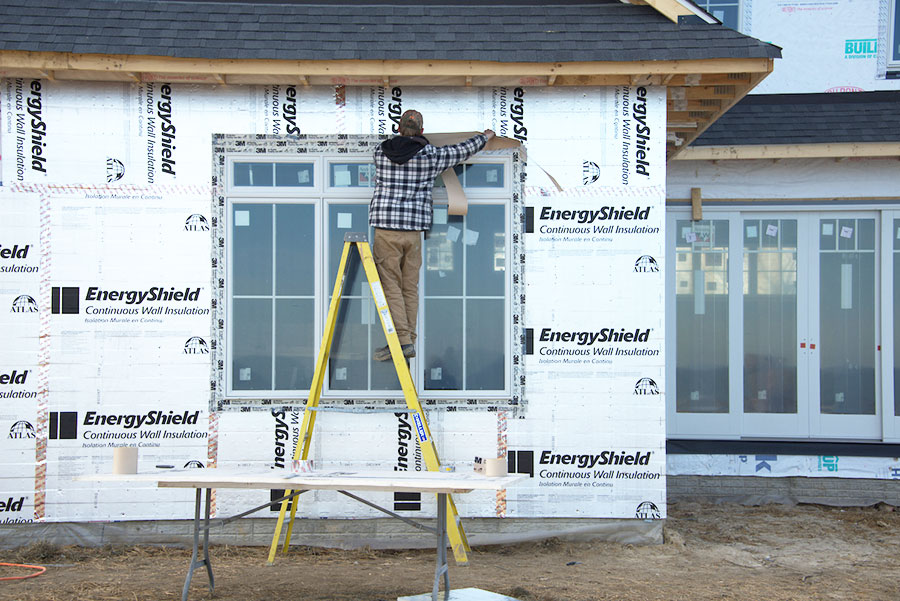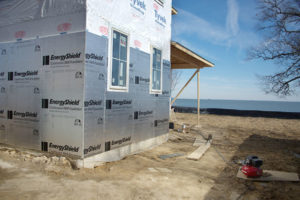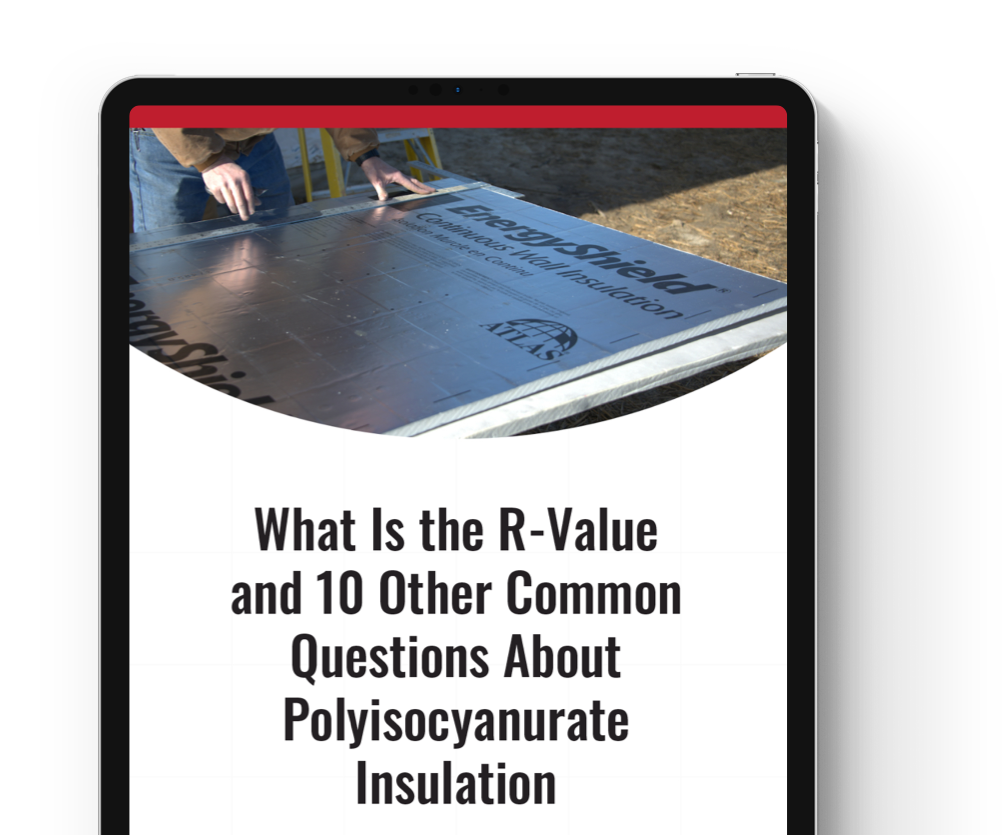Comfort seems to be on the minds of everyone lately. Americans were already spending 87 percent of their time indoors prior to COVID-19. With so many people working and attending school remotely due to the pandemic, staying comfortable at home has taken on even greater importance.
At the same time, the reality of a poorly insulated home is much more noticeable – and disruptive. Perhaps you’ve spent months sweating in a badly insulated bonus room or freezing in a corner of your basement that was converted into a makeshift office.
While many homeowners are just now thinking about the space within their walls, building scientists have been thinking about that space for a long time. In terms of maintaining comfort, it makes sense to incorporate materials that limit the need to heat or cool (i.e., condition) the air but instead help to keep interior temperatures more uniform while also reducing energy demand.

The Importance of R-Value
Thermal energy (i.e., heat), naturally travels in the direction of hot to cold. R-value is the measure of a building product’s ability to ‘resist’ or reduce heat flow. Most modern wall assemblies have gaps between the studs along with openings to accommodate outlets, wires, pipes, etc. Insulation products with high R-values more effectively reduce energy transfer, keeping homes both warm in the winter and cool in the summer by reducing heat loss and keeping the cool air AC units produce inside homes.
Atlas® EnergyShield continuous wall insulation has an R-value of 6.5 per inch of thickness – the highest available R-value for panel insulation. This helps maintain consistently comfortable indoor temperatures despite the weather outside.
Continuous Insulation for Continuous Comfort
In framed walls using traditional batt or blown-in insulation, insulated areas of the wall are interrupted by vertical studs. These studs serve as ‘thermal bridges,’ or conductive areas within walls where thermal energy can easily travel from the indoors to the outdoors during the winter or from outdoors to indoors during the summer months. If those studs are metal, energy transfer happens even faster, due to metal’s inherent conductive properties.
Because studs and beams often remain exposed and uninsulated, much of the wall system is at risk of heat exchange. EnergyShield continuous insulation addresses this problem by reducing thermal bridges. Rather than stopping once it meets a stud, the insulation goes over studs, limiting the opportunity for heat transfer and providing a more comfortable space. Think of it as the down in a down jacket – but for a home.
Why Designing for Comfort Matters

Whether they reside in warm or cold climates, many homeowners contend with poor insulation and the resulting variation in comfort levels. In fact, studies show that heat can trigger stress and aggression while cold indoor air can limit the body’s ability to fight infection. Volatile organic compounds (VOCs), which exist in some building products, can emit fumes that aggravate asthma, which affects 7.7 percent of adults and 8.4 percent of children in the U.S. EnergyShield’s GREENGUARD Gold Certification ensures that it meets the world’s most rigorous third-party chemical emissions standards, helping to reduce indoor air pollution and chemical exposure in the form of VOCs.
With people spending more time in their homes than ever, designing with homeowner health and comfort in mind is paramount. An increase in extreme weather combined with dramatic temperature shifts due to climate change makes it even more important to maintain comfortable, consistent, temperatures. The use of continuous wall insulation within a home can avoid these challenges, resulting in a more comfortable and enjoyable space.
Going Beyond Comfort
Modern building codes have moved toward favoring (and, in many cases, requiring) better insulation solutions. According to the U.S. Energy Information Administration, heating and air conditioning make up 32 percent of total residential energy use. As the cost of energy increases, states and cities are growing more concerned with homes that put a large load on the energy grid.
At the same time, homebuyer preferences are trending toward passive and net-zero homes that require little or no energy to operate. Combined with elements such as solar power and geothermal water heating, continuous wall insulation can serve as a critical piece in a tight building envelope that maintains comfort while generating energy that can be sold back to the local energy grid.
Designing comfortable homes doesn’t mean you have to make uncomfortable choices. As the demand for spaces that combine comfort and well-being with energy efficiency grows, it is crucial to specify materials that provide reliable performance in all weather conditions and climate zones. EnergyShield continuous wall insulation combines high R-value, durable foil facers, and water-resistive attributes in a high performance rigid wall insulation, giving homeowners the superior comfort they deserve.

